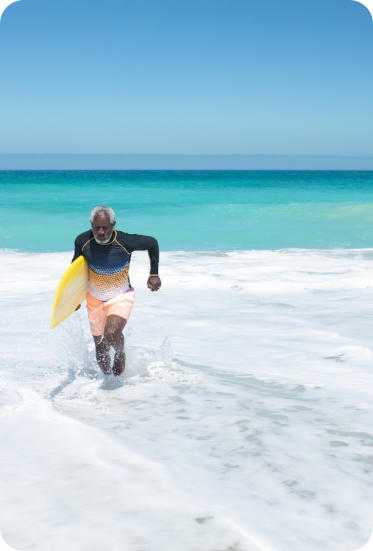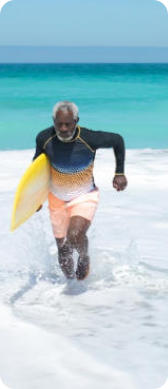ON-SITE
AFTER HOURS
ORTHOPEDIC




COPYRIGHT © MURPHY WAINER ORTHOPEDIC SPECIALISTS
ALL RIGHTS RESERVED.
WEB DEVELOPMENT BY A BETTER WEB, INC.
Quad-Sparing Knee Replacements

The quadriceps-sparing, minimally invasive total knee replacement reduces post-operative
discomfort by sparing the quadriceps muscle and tendon that are traditionally cut through
during a normal total knee replacement surgery. During the quad-sparing procedure, Dr.
Wainer makes a small incision and moves the quadricep muscle and surrounding soft
tissue rather than cutting through it. Dr. Wainer is assisted by a computer the procedure
can be performed without inserting a guide rod into the femur bone. The computer gives
Dr. Wainer constant feedback during the procedure to provide the best possible knee
alignment for the patient.
•
Less trauma to muscles and tendons
•
Smaller, less noticeable incision
•
No guide rod is needed through the femur bone
•
Less damage to tissue
•
Shorter rehabilitation
•
Less blood loss
•
Shorter hospital stay
•
Faster return of basic knee functions
•
Generally good mobility within 24 hours after operation
ON-SITE
AFTER HOURS
ORTHOPEDIC




COPYRIGHT © MURPHY WAINER ORTHOPEDIC SPECIALISTS
ALL RIGHTS RESERVED.
WEB DEVELOPMENT BY A BETTER WEB, INC.
Quad-Sparing Knee
Replacement
The quadriceps-sparing, minimally invasive total knee
replacement reduces post-operative discomfort by
sparing the quadriceps muscle and tendon that are
traditionally cut through during a normal total knee
replacement surgery. During the quad-sparing
procedure, Dr. Wainer makes a small incision and moves
the quadricep muscle and surrounding soft tissue rather
than cutting through it. Dr. Wainer is assisted by a
computer the procedure can be performed without
inserting a guide rod into the femur bone. The computer
gives Dr. Wainer constant feedback during the
procedure to provide the best possible knee alignment
for the patient.
•
Less trauma to muscles
and tendons
•
Smaller, less noticeable
incision
•
No guide rod is needed
through the femur bone
•
Less damage to tissue
•
Shorter rehabilitation
•
Less blood loss
•
Shorter hospital stay
•
Faster return of basic
knee functions
•
Generally good mobility
within 24 hours after
operation


Notice: All external links and PDFs will open in a new tab

External links and PDFs will open in a new tab



























